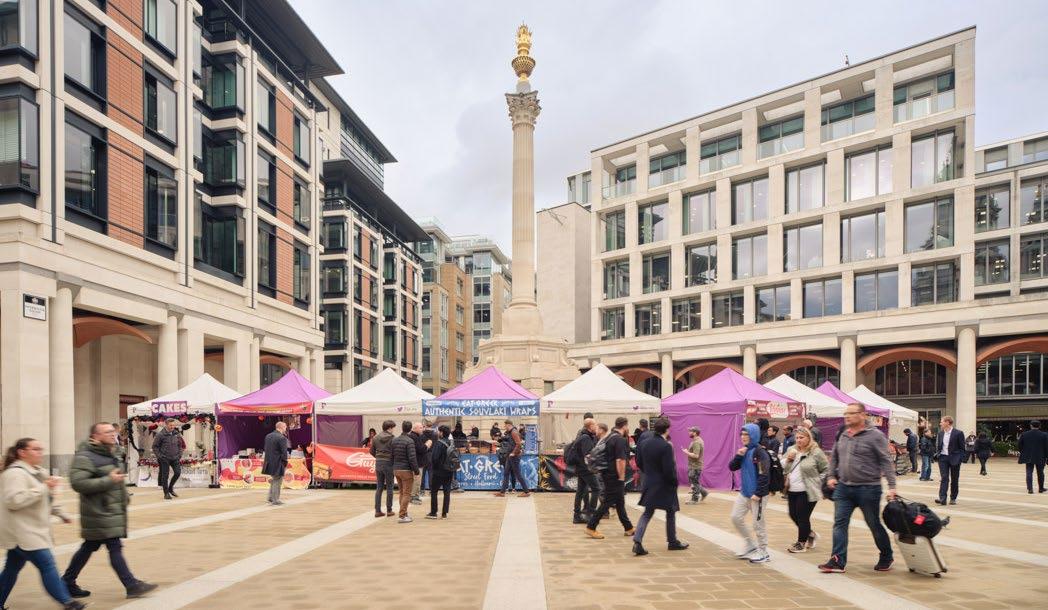

Culture & Visitors 7
Strategic Policy
S6: Culture and Visitors
The City Corporation will maintain and enhance the City of London’s cultural, leisure and recreation offer, visitor experiences and infrastructure, and the City’s evening and weekend economies to position the Square Mile as a key cultural and leisure destination, by:
1. Encouraging cultural placemaking and creating vibrant and inclusive places that contribute to the experience of living, working and visiting the City while addressing the needs and aspirations of the City’s communities;
2. Developing a wide range of cultural, leisure and recreation facilities across the City that offer unique experiences at different times of the day and week, in line with the Culture Planning Framework (CPF), and that support City’s role as a visitor destination;
3. Protecting and enhancing existing areas of cultural significance including cultural buildings and leisure and recreation facilities, particularly where they provide an anchor for cultural regeneration or where a continuing need exists and ensuring there is no overall loss of cultural facilities or diversity in the City;
4. Providing accessible and inclusive infrastructure and facilities that complement cultural, leisure and recreation uses in the City;
5. Placing heritage at the heart of cultural placemaking, seeking opportunities to embed heritage in the cultural offer and creating spaces and experiences that celebrate the City’s rich history, culture and community;
6. Supporting the development of creative industries and encouraging appropriate workspace and digital infrastructure to facilitate their development;
7. Allowing hotel development where it supports the primary business or cultural role of the City;
8. Enabling a vibrant evening and night-time economy, especially in areas of night-time activity and around cultural and tourist attractions where public transport such as the night tube and night buses are available, ensuring that users are well-served with safe and convenient night-time transport;
9. Maintaining the City’s existing artworks, statues, memorials and culturally significant items and pursuing opportunities to commission new, high quality artworks in appropriate locations, ensuring they protect and enhance the local character, are accessibly and inclusively designed, and contribute towards enriching the public realm;
10. Maintaining and enhancing the City’s open spaces and public realm to accommodate cultural events and activities that are inclusive and accessible to all City communities, and which promote and celebrate the City’s rich heritage and culture; and
11. Encouraging the temporary use of vacant buildings for creative and cultural activities.
7
Culture & Visitors
Reason for the policy
7.1.0 London has long been recognised as one of the world’s great cultural cities. The definition of culture in the context of the City is broad and inclusive; culture exists both in the buildings and heritage of the City’s institutions and in the streets and informal spaces in between. The City of London contains a huge concentration of arts, leisure, recreation and cultural facilities and spaces that contribute to its uniqueness and complement its primary business function. These include buildings, structures and spaces where culture is either consumed (culture consumption spaces) or produced (culture production spaces) such as creative workspaces, arts galleries, studios, museums, theatres, Livery Halls, libraries, music, sports, entertainment and performance venues; and complementary uses which contribute to the primary culture, leisure and recreation function such as restaurants, retail, hotels, open spaces and tourism facilities. The City’s night-time entertainment facilities – such as clubs, bars and event venues alongside traditional historic public houses – play a crucial role as cultural contributors. They enhance the City’s leisure, recreation and cultural offer, providing people with a wholesome experience and a sense of belonging. Community facilities, open spaces, places of worship, and heritage also provide important physical settings for a wide range of cultural, leisure and recreation activities that can attract more visitors.
7.1.1 The City’s cultural offer forms an integral part of the Square Mile, alongside its financial and business role. The Barbican is identified as a strategic night-time location of national or international significance in the London Plan while Cheapside
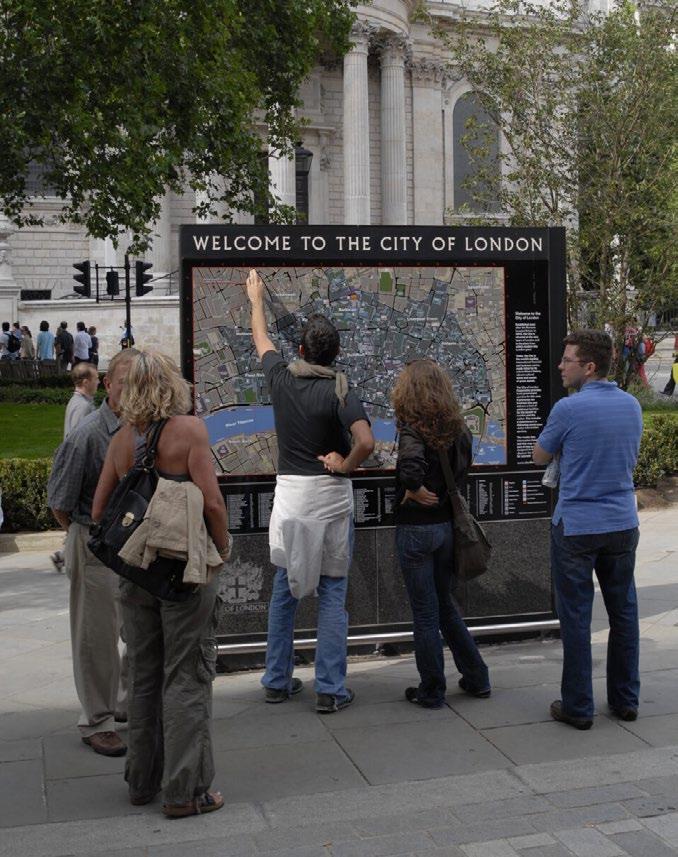
Culture & Visitors
and Liverpool Street are identified as night-time areas of more than local significance in the London Plan. The London Museum with its new home in Smithfield’s iconic market buildings will act as a cultural anchor in one of the most historic areas of the Square Mile.
7.1.2 Destination City, the City Corporation’s flagship strategy, seeks to ensure that the City is a global destination for workers, visitors and residents. It seeks to enhance the Square Mile’s leisure and cultural offer by creating a sustainable, innovative and inclusive ecosystem of culture that celebrates its rich history and heritage and makes it more appealing to visitors as well as the City’s working and resident communities.
7.1.3 The City’s cultural infrastructure is important to the distinctive and historically significant character of the Square Mile. The international reputation and high quality of this cultural activity has a critical part to play in the vibrancy of the working environment and adds to the appeal of the City as a place to do business. It attracts an increasing number of visitors, with consequent economic benefits, and supports the health and wellbeing of the City workers, residents and visitors.
How the policy works
7.1.4 The City Corporation will require proposals for new development and changes of use to protect existing leisure, arts and cultural facilities where they are needed and where necessary require appropriate replacement. The City Corporation will work with developers and cultural and arts institutions to deliver new facilities and spaces where they enhance the attractiveness of the City as a business and cultural and leisure destination.
7.1.5 The City Corporation’s Cultural Planning Framework (CPF) identifies focal areas across the Square Mile, and sets a broad framework that new cultural infrastructure, visitor attractions and complementary facilities will be expected to help realise.

Culture & Visitors
Policy CV1: Protection of Existing Visitor, Arts and Cultural Facilities
1. The City Corporation will resist the loss of existing visitor, arts, and cultural facilities, unless:
a. Replacement facilities of at least equivalent quality are provided on-site or within the vicinity which meet the needs of the City’s communities; or
b. The use can be delivered from other facilities without leading to or increasing any shortfall in provision and it has been demonstrated that there is no demand for another similar use on the site; or
c. It has been demonstrated that there is no realistic prospect of the premises being used for a similar purpose in the foreseeable future.
2. Proposals resulting in the loss of visitor, arts and cultural facilities must be accompanied by evidence of the lack of need for those facilities. Loss of facilities will only be permitted where this would facilitate the overall enhancement of visitor, arts or cultural provision within the vicinity or where it has been demonstrated that the existing facility has been actively marketed for its current or an alternative visitor, arts or cultural use at reasonable terms for such a use.
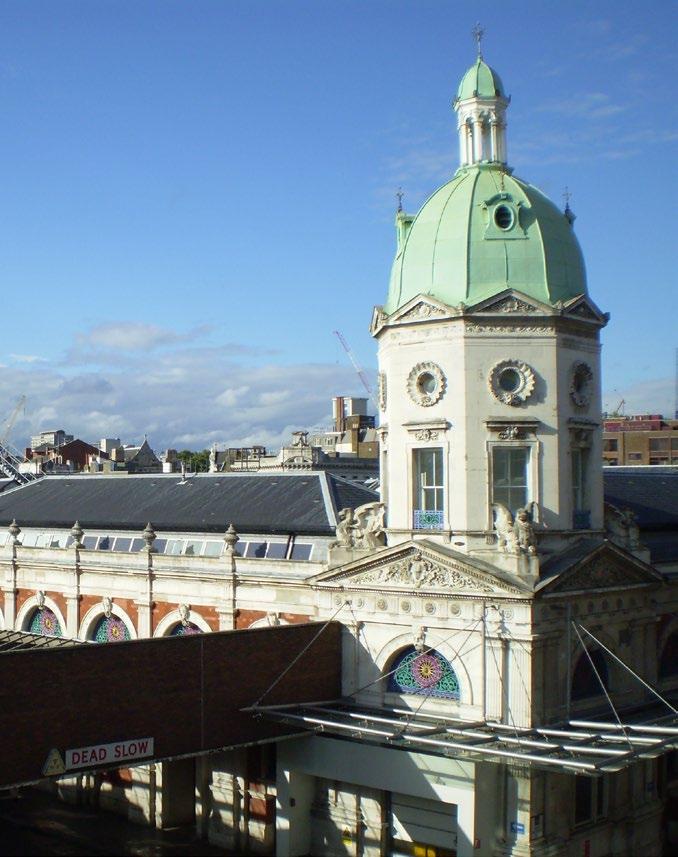
Culture & Visitors 7
Reason for the policy
7.2.0 The vibrancy of the City’s cultural offer depends on a broad network of arts and cultural organisations and facilities, and it is important that there is sufficient floorspace available to accommodate these uses. There is strong competition for buildings and sites from commercial uses in the City so it will be necessary to demonstrate that an existing arts or cultural use is no longer needed before a site will be allowed to change use.
7.2.1 There are many cultural facilities that are unique to the City and maintain an historic or cultural association with the Square Mile. Special consideration needs to be given to the protection of these facilities to maintain the City’s unique cultural heritage. Examples of such facilities include City Livery Halls, public houses which have a heritage, cultural, economic or social value to local communities, theatres, museums, churches, and specialist retail premises such as the Silver Vaults in Chancery Lane.
How the policy works
7.2.2 Applicants will be required to demonstrate that an existing visitor, arts or cultural facility has been marketed and that there is no reasonable interest from relevant organisations. Information should be included which sets out the length of time the property or site has been marketed; the number of viewings; the comments from prospective purchasers or tenants (including reference regarding the suitability of continued visitor, arts or cultural use). Marketing will not be required if it can be demonstrated that the loss of a facility is part of a business plan to deliver improvements to another similar facility nearby.
7.2.3 The City Corporation has published guidelines for determining nominations for Assets of Community Value (ACV) in the City of London, which include local criteria to assess the role of public houses in furthering social wellbeing or social interest. In determining whether a public house has heritage, cultural, economic or social value, the City Corporation will have regard to those guidelines as well as the characteristics outlined in the London Plan.
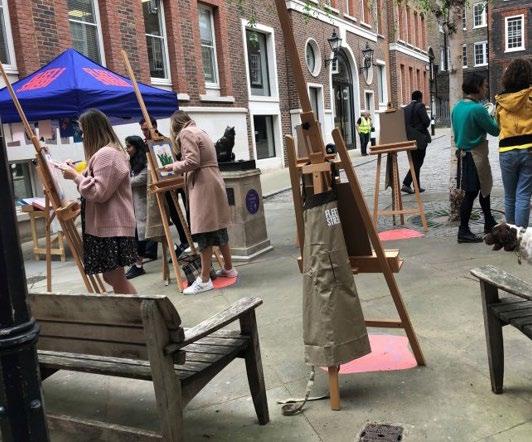
Culture & Visitors
Policy CV2: Provision of Arts, Culture and Leisure Facilities
The City Corporation will seek opportunities to provide new arts, cultural and leisure facilities that offer unique experiences at different times of the day and week and attract significant numbers of visitors into the City by:
1. Requiring major developments to submit Culture and Vibrancy Plans setting out how their development will culturally enrich the Square Mile, informed by the City Corporation’s Cultural Planning Framework (CPF);
2. Requiring large scale development proposals of 10,000 sqm or more in size to make provision on-site for arts, culture or leisure facilities;
3. Requiring major developments below 10,000 sqm in size to make provision for arts, culture or leisure facilities of a scale commensurate with the size of the development, or to provide off-site provision or contributions towards arts, culture and leisure facilities and infrastructure. On-site provision will be preferred, with off-site provision only being appropriate where a specific project has been identified through partnership working.
4. Encouraging the provision of arts, culture and leisure facilities in historic buildings and spaces where this would contribute to the enjoyment, appreciation and understanding of the City’s heritage in a way that is inclusive, welcoming and accessible for all.

Culture & Visitors 7
Reason for the policy
7.3.0 The provision of new arts, culture and leisure facilities in the Square Mile is a key mechanism to help realise the City Corporation’s Destination City vision. These facilities will not only help to ensure the City becomes a key leisure destination for visitors but also maintains and enhances its position as a global business centre, as well as providing exciting and enriching cultural and leisure experiences for people living and working in and around the Square Mile. To achieve this, it is crucial that major developments contribute towards delivering new cultural and leisure facilities that help enhance the appeal and character of the development and the focal area in which they are located.
7.3.1 A review of the Cultural Plans submitted with planning applications show that many major developments already make a significant on-site contribution to the creation of new cultural spaces. Large developments have the greatest flexibility to provide facilities on-site, although many smaller major developments will also be able to accommodate cultural facilities, or to contribute to schemes in the area.
How the policy works
7.3.2 Major developments will be required to submit Culture and Vibrancy Plans. These Plans should describe the cultural proposal, including the type and scale of the arts, culture or leisure offer, and how it would complement the character of the focal area identified in the CPF.
7.3.3 Arts, culture and leisure facilities covers a wide range of uses, including museums, art galleries, libraries and performance venues; community uses that can be used and programmed creatively; integrating cultural activities into new public spaces, including roof gardens and viewing galleries; creating active street-level spaces; revealing spaces within heritage buildings to the public; creating a heritage-led cultural offer; providing affordable space for creative enterprises; encouraging meanwhile uses; providing inclusive and accessible sport and recreation facilities; and incorporating public art in the building’s design or within the public realm.
7.3.4 Developers should consider the operational and management requirements of cultural and leisure facilities provided in new developments prior to approval. A robust management plan for operational and management arrangements should be submitted as part of the Culture Plans at the pre-application stage.
7.3.5 In some instances, financial contributions can be pooled together to deliver larger projects creating a more significant impact. Where two or more developments are in close proximity to each other, it may be acceptable to pool contributions to provide a larger cultural offer which will have a greater value.
Culture & Visitors 7
Policy CV3: Provision of Visitor Facilities
The provision of facilities that meet the needs of visitors in new cultural developments and in nearby open spaces and the public realm will be encouraged, including:
1. Seating and tables;
2. Structures and landscaping to enable children’s play and provide facilities for school groups;
3. Suitable shelter from weather conditions;
4. Well-designed public convenience provision, including changing places toilets, accessible to all users;
5. Well-designed signage, wayfinding and links to visitor facilities and destinations;
6. Temporary pop-up art installations, galleries and spaces in appropriate locations:
7. Performance spaces and animation of key routes where appropriate.
Reason for the policy
7.4.0 The City attracts large numbers of tourists in certain locations such as around St. Paul’s Cathedral and near the Tower of London. This is expected to grow with new attractions including the relocated Museum of London in Smithfield attracting increased numbers of visitors. It is important that the City of London can offer a range of facilities and events which meet the needs of these visitors whilst creating a distinctive look and feel for the City.
How the policy works
7.4.1 The City Corporation will work with developers and arts and culture institutions to ensure that new developments and open spaces near tourist attractions provide facilities that improve the experience for visitors and cater for how visitors use the space. These facilities must be capable of being accommodated without detracting from the setting of the relevant tourist attraction, the wider townscape or residential amenity.
Culture & Visitors 7
Policy CV4: Hotels
Proposals for hotels and other visitor accommodation will be permitted where they:
1. Comply with the requirements of Policy OF2;
2. Do not result in adverse impacts on the amenity of neighbouring occupiers, including cumulative impacts;
3. Provide active frontages and active uses at ground floor level, including facilities accessible to the public;
4. Are in suitable locations that provide good access to attractions, workplaces and other destinations in and outside the City, including via public transport;
5. Provide satisfactory arrangements for pick-up/drop-off, service delivery vehicles, waste storage, and taxis, appropriate to the size and nature of the development;
6. Are inclusive, meeting London Plan accessibility standards for new hotel bedrooms;
7. Ensure continuing beneficial use for historic buildings, including enhanced and inclusive public access to and interpretation of that heritage, where appropriate; and
8. Address the sustainability challenges associated with the City’s BREEAM priorities (energy, water, pollution and materials).
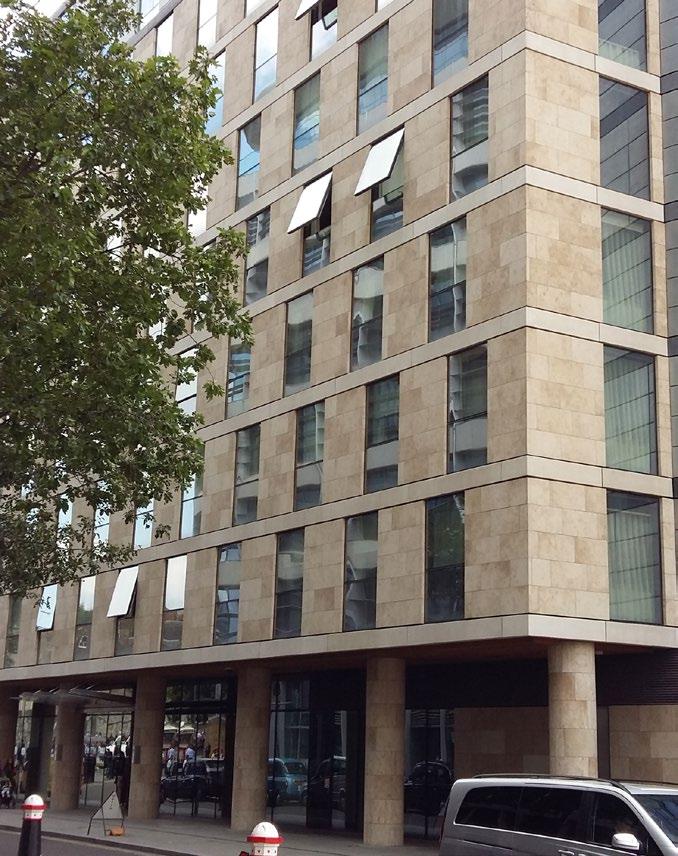
7
Culture & Visitors
Reason for the policy
7.5.0 While the majority of visitors are day-trippers, the City has seen strong demand for hotel accommodation in the last ten years, and in 2022 had 43 hotels, apart-hotels and hostels, providing 7,552 bedrooms and a further 33 serviced apartment properties providing 1,551 units. A hotel needs study for the City was carried out in 2022, which assessed the overall need for hotel bedrooms to be 4,012 by 2037. This consists of the forecast pipeline of hotel rooms up to 2030, with additional projected demand of an average of 350 rooms per year beyond that point.
7.5.1 Hotel accommodation is important to cater for business visitors wishing to stay in the City, as well as leisure visitors. The amount of office floorspace will increase significantly in the next 20 years and the demand for business accommodation is likely to increase. Visitor numbers are projected to increase, and the development of the City Corporation’s ambition to establish the City as a cultural destination is likely to increase demand for hotel accommodation, particularly in the north west of the City.
How the policy works
7.5.2 Policy CV3 applies to hotels, apart-hotels and serviced apartments.
7.5.3 Hotel development should complement the primary business function of the City. Proposals will need to demonstrate that they are in accordance with Policy OF2 and the Office Use SPD.
7.5.4 Hotel development may be suited to listed buildings, providing an alternative use which could enable significant heritage features to be conserved and enhanced. Where such change of use is proposed, the City Corporation will seek improved inclusive public access to and interpretation of the building’s heritage.
7.5.5 Hotels can cause amenity issues for surrounding occupiers, for example through noise nuisance or traffic and servicing impacts. New hotel proposals will be expected to prioritise access by walking, cycling and public transport. The location of entrances and exits, drop-off points and servicing and delivery arrangements will be considered in the context of surrounding occupiers.
7.5.6 Where new hotels are considered to be acceptable, they should facilitate the creation of active frontages and an inclusive City by providing public access to inclusive facilities such as co-working space, meeting rooms, cafes, restaurants or leisure facilities or other spaces, in order to bring the maximum benefit to the City’s communities. Hotel lobbies that have a significant ground floor presence should be designed as inclusive, welcoming spaces that members of the public who are not staying at the hotel feel welcome to enter and spend time in. Large-scale hotel development may also be suitable locations to provide public toilet facilities and provide ‘cool spaces’ that provide temporary respite during heat waves.

Culture & Visitors
7.5.7 Apart-hotels and serviced accommodation often display characteristics more associated with permanent, self-contained housing. Some are more akin to hotels in the type of services they provide but may result in different impacts. Apart-hotels/serviced apartments may therefore fall within the C1 or C3 Use Classes, depending on their characteristics. Factors that may affect the Use Class include;
X Presence of on-site staff/management;
X Presence of reception, bar or restaurant;
X Provision of cleaning and administrative services;
X Ownership of units/ability to sell on open market; and
X Minimum/maximum lease lengths.
7.5.8 Where apart-hotels and serviced apartments are considered to fall within the C3 (dwelling houses) Use Class, proposals will be assessed in accordance with the housing policies in this Plan, including the requirement for affordable housing. Conditions will be used to ensure units are subject to minimum lease lengths.
7.5.9 For proposals within the C1 (Hotels) Use Class, planning conditions will be considered to ensure that units would not be used or occupied by permanent households as this would reduce the availability of accommodation for short-term visitors to the City and may prejudice the business City and put pressure on local services and infrastructure. Conditions will therefore be used to ensure units are subject to maximum lease lengths (typically 90 days).
The City has 43 hotels, apart-hotels and hostels, providing 7,552 bedrooms. A further 33 serviced apartments provide 1,551 units.
Culture & Visitors
Policy CV5: Evening and Night-Time Economy
1. Proposals for new evening and night-time entertainment and related uses and the extension of existing premises will be permitted where it can be demonstrated that, either individually or cumulatively, there is no unacceptable impact on:
a. the amenity of residents and other noise-sensitive uses;
b. environmental amenity, taking account of the potential for noise, disturbance, waste and odours arising from the operation of the premises, customers arriving at and leaving the premises, and the servicing of the premises.
2. Applicants will be required to submit Management Statements detailing how these issues will be addressed during the operation of the premises and should engage with nearby residential and commercial occupiers.
3. Where new residential development is proposed close to existing evening or night-time uses, the residential development will only be permitted if it includes suitable measures to mitigate potential disturbance and noise and air quality issues for prospective residents, in line with the agent of change principle.

7
Culture & Visitors
Reason for policy
7.6.0 Evening and night-time entertainment is becoming an important part of the City’s economy, bolstered by London’s move toward becoming a 24-hour destination, growing numbers of workers and visitors, and the encouragement of arts and culture in the City. Expansion of the City’s evening and night-time offer will be encouraged where it is compatible with neighbouring uses. Night-time entertainment has the potential to add vibrancy to the Square Mile but can cause noise disturbance to nearby residents as well as other impacts such as anti-social behaviour, litter and odours. These adverse impacts need to be mitigated.
7.6.1 Anti-social behaviour can potentially be reduced by providing a broad range of evening and night-time activities that appeal to different customers, rather than concentrating one type of use in a particular area. This includes extending the opening hours of existing day-time facilities such as shops, cafes and leisure facilities, which can promote customer cross-over and create bridges between the day-time and night-time economy.
How the policy works
7.6.2 The City Corporation will require the development responsible for change to manage the impact of that change – the ‘Agent of Change’ principle. This means that a new residential development built near to an existing night-time entertainment use would be responsible for providing appropriate soundproofing or other mitigation measures to avoid any undue impact, whereas a new night-time entertainment use opening in a residential area would be responsible for the necessary mitigation measures.
7.6.3 Night-time entertainment uses in the City include restaurants and cafes, drinking establishments, hot food takeaways, nightclubs and other related uses which form part of the City’s wider nighttime economy.
7.6.4 The management of night-time entertainment and licensed premises is undertaken through the operation of both planning and licensing regimes. In general, the planning regime controls the location, design and planning use of premises to protect the amenity of an area or local residents, whilst the licensing regime is used, having regard to licensing objectives, to control specific activities at premises to prevent, for example, noise and other public nuisance.
7.6.5 Planning and licensing regimes operate under separate legislative and regulatory frameworks. The City Corporation will ensure that, as far as is possible, a complementary approach is taken between planning and licensing within the legislative framework. The City Corporation publishes a Statement of Licensing Policy, which outlines the approach that it will take when considering
Culture & Visitors
applications for the sale and supply of alcohol, the provision of regulated entertainment and the provision of late-night refreshment. This is supported by the City Corporation’s Code of Good Practice for Licensed Premises. The City Corporation’s Noise Strategy sets the strategic direction for noise policy within the City of London and outlines steps that the City Corporation will take, and is already taking, in dealing with noise issues, including those arising from night-time entertainment.
7.6.6 The character of many licensed premises has changed significantly in recent years. Existing and new premises often have longer operating hours, may have larger capacity and may provide live or recorded amplified music. Some of these premises are close to residential accommodation and this can result in disturbance and nuisance from excessive noise, particularly from people drinking and smoking outside, and arriving or leaving. Policy SA2 (Dispersal Routes) requires applications for night-time uses to include Management Statements setting out proposals for the dispersal of patrons.
7.6.7 All planning applications for restaurants and cafes, where planning permission is required, and for drinking establishments, hot food takeaways and related, uses should include information stating the proposed hours of operation. The City Corporation may impose conditions requiring the closure of the premises between the hours of 11pm and 7am where appropriate, such as near noise sensitive uses.
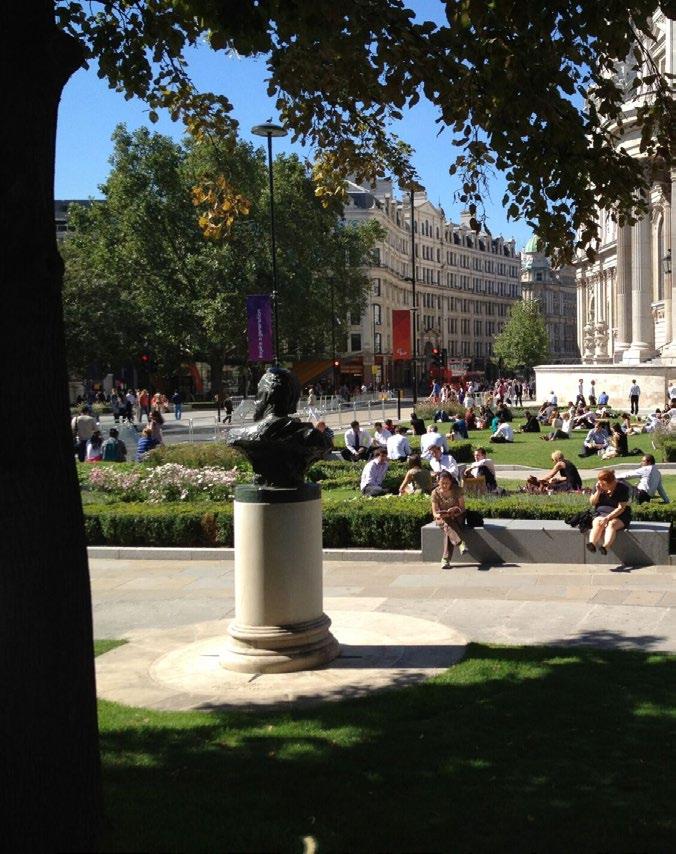
Culture & Visitors 7
7.6.8 Potential applicants seeking planning permission for a nighttime entertainment use, between the hours of 11pm and 7am, are expected to engage at the earliest possible stage with the City Corporation as Licensing Authority, the City of London Police, local residents and other neighbouring occupiers that will be affected by the proposal. This will ensure that the local context and local sensitivities are fully understood and can be taken into account when designing premises for night-time entertainment uses and planning the operation of the proposed use to minimise adverse impact on amenity.
7.6.9 Proposals for new and extended night-time entertainment uses or for variations of planning conditions must be accompanied by a Management Statement that addresses planning amenity issues, sets out how potential impacts on amenity will be addressed through the design of the premises and how they will operate without causing disturbance including:
X hours of closure to protect amenity;
X noise mitigation plans related to both internal and external noise, including measures to reduce sound transfer, such as soundproofing, noise controls and double entry lobbies;
X the dispersal of patrons so as not to cause disturbance to residents;
X arrangements for the storage, handling and disposal of waste;
X a timed programme for deliveries and collections and other servicing arrangements;
X measures to deal with the emission of odours; and X location of ventilation ducts and plant.
7.6.10 Assessment of the Management Statement will have regard to the City Noise Strategy, the provisions of the City of London Statement of Licensing Policy and to any submitted licence application operating schedule. It is recognised that it may not be possible to submit detailed Management Statements when details of the end use operator are not known. However, applicants should submit an outline Management Statement which considers physical design measures to minimise disturbance, such as those outlined in the paragraph above. In such cases, conditions will be attached to any planning permissions granted requiring full Management Statements to be submitted once the occupiers are known.
7.6.11 To safeguard quiet times and amenity, particularly for residents and other noise-sensitive uses, the City Corporation will attach planning conditions or seek s106 planning obligations to ensure compliance with agreed Management Statements. The City Corporation will normally apply conditions to limit the hours of operation where there is potential for unacceptable disturbance to local residents and others. Each case will be considered in relation to its locality and the need to strike a balance between the benefits to the City of night-time entertainment and the risk of disturbance to local residents, workers and others.
Policy CV6: Public Art
Culture & Visitors 7
1. The City’s public realm and distinctive identity will be enhanced by:
a. encouraging the provision of new permanent, temporary, inclusive, diverse and high quality artworks in appropriate locations in the City on public and private land;
b. protecting existing works of art, statues, memorials and other objects of cultural significance;
c. ensuring that financial provision is made for the continuing maintenance of new public art;
d. requiring the appropriate reinstatement or re-siting of art works and other objects of cultural significance when buildings are redeveloped.
2. The location of new and relocated artworks must take into consideration the health and safety of pedestrians, particularly disabled people, and other road users.
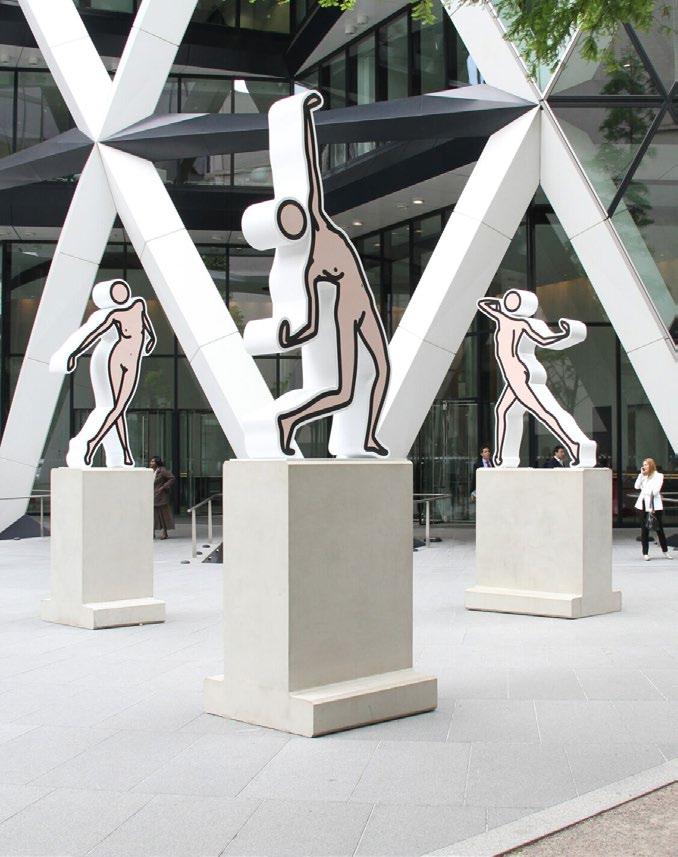
7
Culture & Visitors
Reason for the policy
7.7.0 Art can contribute significantly to the quality of the environment, particularly where it enhances a sense of place and local identity and is a form of community infrastructure. Public art includes temporary installations and non-physical works such as soundscapes.
7.7.1 Where appropriate, artworks can be multi-functional so that a variety of community needs can be met. Artworks may provide shelter from the weather, include sensory elements and provide play opportunities.
7.7.2 There are several arts events held regularly including Sculpture in the City which forms a free public trail of works of art throughout the City.
7.7.3 The proposed public art must respect, and not detract from, the surrounding environment. Objects of cultural significance may include blue plaques, statues, monuments, fountains, memorials, parish boundary markers and other similar heritage assets.
7.7.4 Works of art must ensure that health and safety considerations are considered when designing, siting and maintaining the installation. Restriction of pedestrian flows must be avoided, and consideration given to ensuring that people with visual or mobility impairments are not placed in danger. Illuminated artworks must be sited to avoid light pollution impacting on nearby residential occupiers.
How the policy works
7.7.5 The City Arts Initiative (CAI) group advises the City Corporation on the artistic merit, siting, setting and appropriateness of public art proposals in the City. Temporary works of art (in situ for less than 8 weeks), which do not require planning permission, will be considered by the CAI group.
7.7.6 Opportunities for public art in open spaces should be considered at an early stage to ensure that they are satisfactorily integrated into the design of development and applicants should work with artists at an early stage of design. Artworks and memorials should be appropriate to their location, including the history and context and the use of a site. Where works of public art are sited in the public realm, they should be endowed to secure their appropriate maintenance in perpetuity and their retention will be secured by condition or legal agreement. Where works of art are on private land, it is expected that those pieces will be maintained to a high standard by the landowner. The City Corporation may seek contributions through s106 obligations towards the provision of new public art and the future maintenance of public art.
